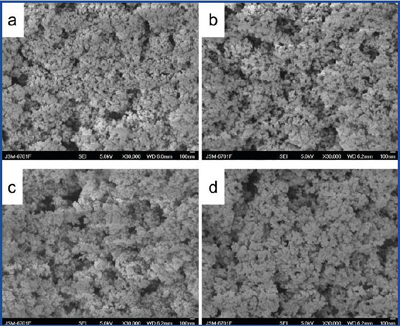Breakthrough has been achieved by the research group led by Prof. Wang Qihua of the Lanzhou Institute of Chemical Physics, Chinese Academy of Sciences, in the facile fabrication of PS/TiO2 nanocomposite coating. The wettability of the coating can be controlled by the drying temperature. In addition, the superhydrophobic PS/TiO2 surfaces were able to be converted to superhydrophilic surfaces under low-intensity UV illumination, which can be recovered through being heated. Other than previously reported TiO2-based superhydrophobic surface, the as-prepared coating has no special structure. Furthermore, other metal oxide particles may also be applied in this way.
Titania is an important material that can be used in many industrial applications related to photosplitting of water, photocatalysis, photovoltaic devices, etc. Titania-based superhydrophobic surface can be fabricated via two kinds of approaches. Most TiO2-based superhydrophobic surfaces need special morphology, especially the nanopillar like structure; the fabrication process is time-consuming and needs some special experiments, which are not beneficial to the application. But with the method Prof. Wang and his team researched, the PS/TiO2 nanocomposite coating can be easily prepared,and the wettability of the coating also exhibits UV-driven superhydrophobic-superhydrophilic conversion, even if there is no nanopillarlike structure.
The work has won support from the important direction project for the knowledge innovative engineering of Chinese Academy of Sciences (Grant KGCX3-SYW-205).

SEM images of the as-prepared coatings under different conditions: (a) dried at 20 ℃; (b) dried at 180 ℃; (c) after UV irradiation for 1 h; (d) UV irradiated coating being heated at 180 ℃ for 1 h. |

